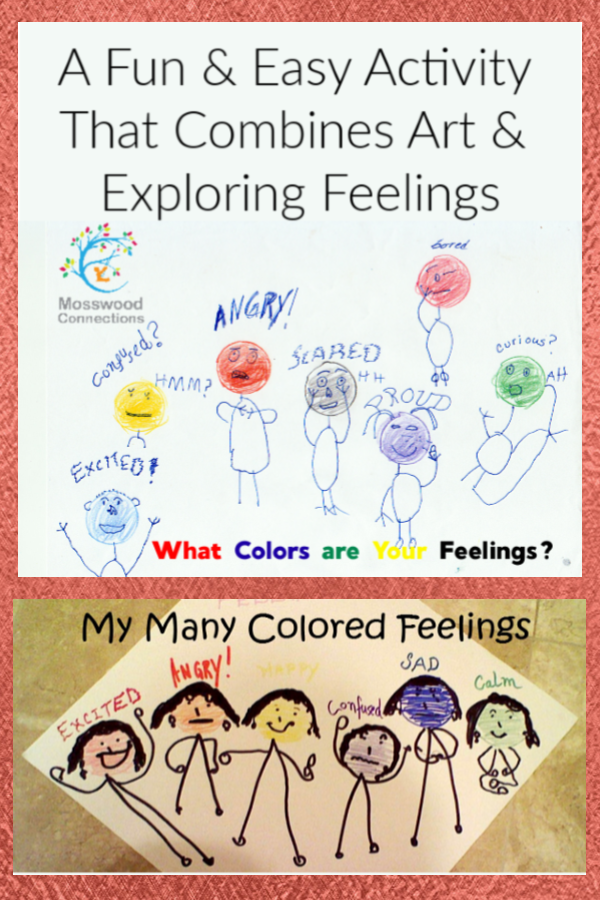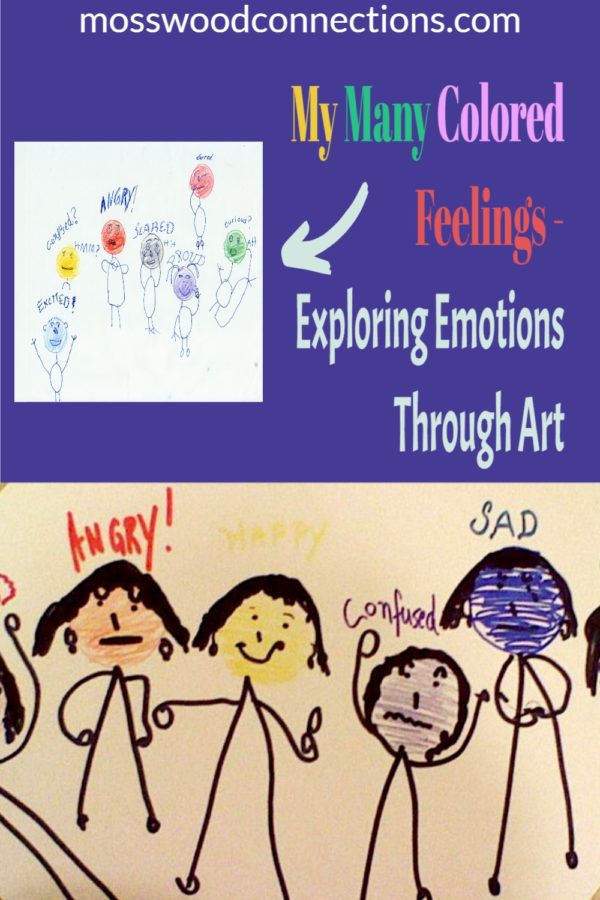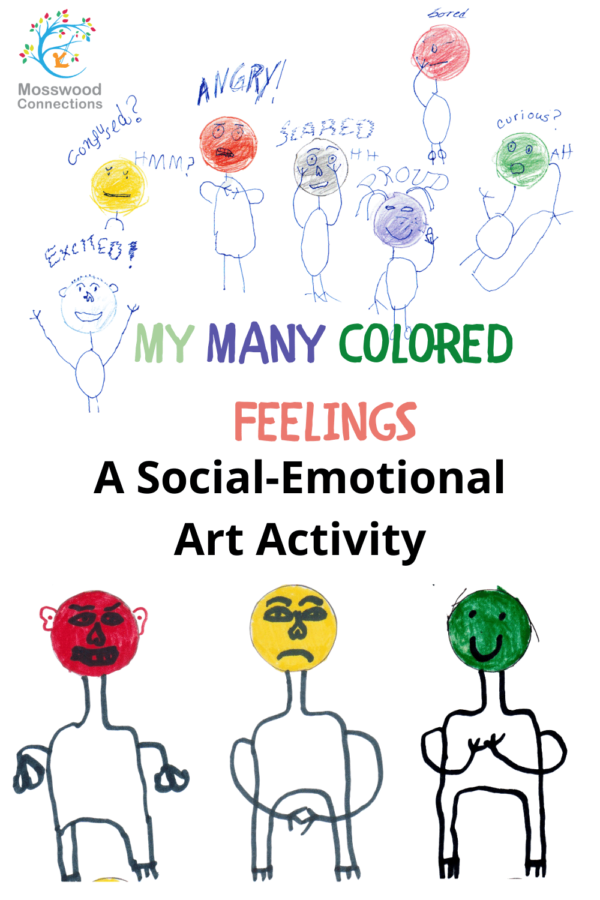My Many Colored Feelings – Explore Emotions Through Art
Explore Emotions Through Art
"I can admit and say that I have feelings." -Juice Wrld
Putting colors to emotions has been going on for centuries. After all, some people believe that the expression “green with envy” goes back to the Shakespearian times. Or perhaps, you have heard the expression “Seeing red”? Children can easily relate to attaching colors to their feelings and this opens up a whole new way for children to talk about and explore their emotions.
This post contains affiliate links. Please visit our disclosure page for more information.

Carol Gray made putting colors together with feelings popular with her comic strip conversations.
This list is her suggestions for colorful emotions:
Green: Good ideas, happy, friendly
Red: Bad ideas, angry, unfriendly
Blue: Sad, uncomfortable
Yellow: Frightened
Black: Facts, truth
Orange: Questions
Brown: Comfortable, Cozy
Purple: Proud
Color Combinations: Confused
It is important to remember that these are suggestions. For colors to have a true personal meaning then each person has to define their own colors. You can see in our examples the children chose different colors for their feelings.

Target Skills for My Many Colored Feelings:
- Processing Emotions
- Theory of Mind
- Creating a vocabulary about feelings to help children more fully express themselves
Materials needed for this social skills activity:
- Paper
- Pens, paint or colored pencils
- Child(ren)
- List of emotions
Instructions for this easy to do art activity:
- Go over some of the feelings that the children can relate to. For children with a basic understanding of feeling words, keep it simple by focusing on basic emotions such as angry and happy. For children with a better understanding, you can introduce more nuanced feeling words such as perturbed or compassionate.
- Make colored circles on a paper.
- Ask what emotion each color represents to them. Have them draw the expression on the colored circle that matches the feeling that they chose.
- Use a mirror or have the children observe each other as they model the feeling.
- Have the child pay attention to the way the arms and legs are drawn, paying attention to whether the body matches the expression.
- Ask the child to mimic with their face and body what they drew.
- When the drawing is complete, talk about when they felt happy, sad, confused, etc.
- Problem solve with them about what they could do when they have those feelings.
- Talk about when they experienced someone else being angry, confused, proud, happy, etc. Why do they think that the other person felt that way?
- Keep the picture they made as a reference. Check back with them after a few weeks. Do the colors still match the feelings for them?
- Have them use the feelings characters to tell a story. It can be about a pretend situation or you can guide them to tell a story about a real-life event.
More fun ways to explore feelings and learn how to regulate emotions:
Balloon People: Balloons are one of the best inventions ever! These balloon people help children explore and identify their emotions in a fun and playful way. Don’t be surprised if a tribe of balloon people invades your house.
Two by Kathryn Otoshi – Picture Book Activities We are happy to share our Two by Kathryn Otoshi.Her books are chock full of social-emotional lessons for kids. Explore feelings with this easy craft that is a great companion activity for the book TWO.
Feel Your Feelings With Texture People: Some children connect their feelings best with words, others like colors or drawing or music. This activity is for those kids who like different textures.
Emotions Scavenger Hunt: Facial expressions can be difficult to read. A scavenger hunt will be a fun way to encourage children to look at and decipher other people’s emotions.
Zeke Learns Facial Expressions!: Lola, who is a rising star, tries to help her younger brother Zeke by teaching him how to use his facial expressions to show his emotions and become more engaging.
How Am I Feeling? Social Skills Game: This free printable game deliberately mismatches the words to the feelings so that one needs to pay attention to the facial expression, body language, and tone in order to correctly guess the feeling.
Stick Up For Your Feelings: Social Skills Game: Kids practice their whole body listening and explore feelings with this fun activity.

